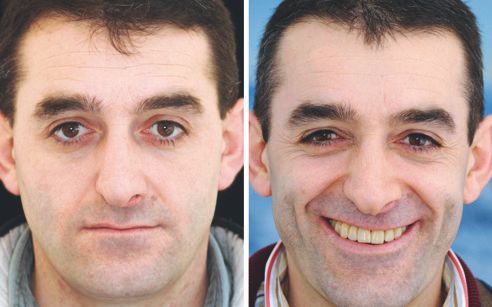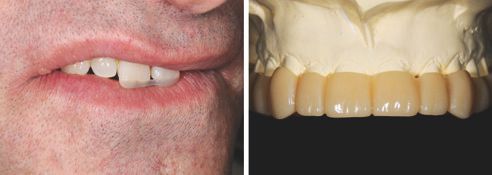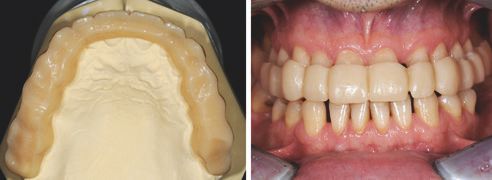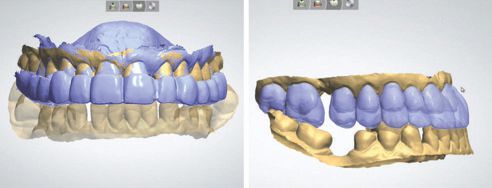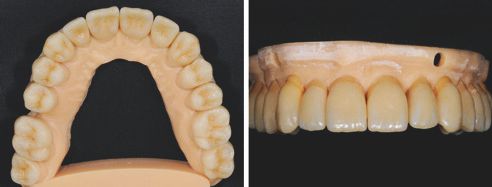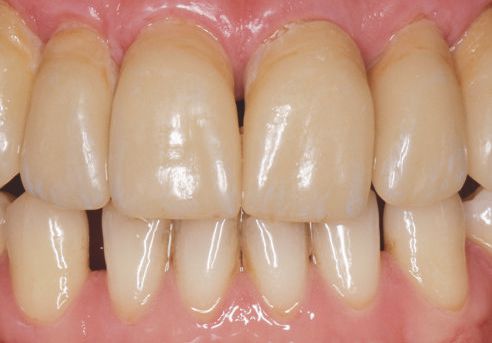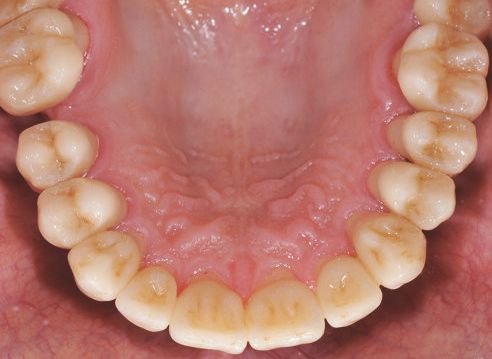Hybrid ceramics in practice: A CAD/CAM material for patients with functional disorders?
The treatment of patients with functional disorders is a challenge for dentists. The extent to which the hybrid ceramic VITA ENAMIC with its dentin-like elasticity may be a material for patients with bruxism is described by Dr. Sjoerd Smeekens in this article. Although reconstructions of VITA ENAMIC are still experimental for this indication, he has already implemented them with clinical success.
1. Initial situation
The 48-year-old patient had suffered for ten years from severe temporomandibular joint pain and headaches, resulting in a depression which had led to his inability to work. Numerous visits to the doctor and treatment attempts (including occlusal splinting) had brought no relief. The patient rejected the corrective jaw surgery recommended because of the existing class III skeletal abnormality due to the uncertain therapy outcome. Figures 1 through 3 show the initial situation.
2. Preliminary treatment
After referral to our clinic, we first tried to stabilize the occlusion via a reversible correction of tooth position. The optimal length of the incisal edges, the occlusion plane and the horizontal and vertical dimension were determined with a maxillary bite registration of wax (Fig. 4). It was shown that, through an elevation of the vertical dimension by 8 mm, a correction of the angle-class III relationship was possible. For the long-term evaluation, a PMMA splint for permanent use was fabricated on the basis of the bite registration (Fig. 5 and 6). Ten hours after its insertion (Fig. 7), the patient reported, with tears of joy, that he was painfree. This condition has been maintained for the wear time of two years.
3. Material selection
Only after successful elevation of the vertical dimension were the permanent restorations fabricated. The objective was to preserve the healthy tooth substance through a non-invasive procedure. In order to achieve an exact fit here, a restoration material that can be milled very thin at the edges is required. Furthermore, a material with properties as close as possible to that of the natural teeth was requested. These prerequisites are met by VITA ENAMIC with its high durability and elasticity as well as the possibility of adhesive bonding.
4. Fabrication of the definitive restorations
For the precise transfer of the optimal tooth position, the digital molding was performed once with and once without the splint. The superimposed scans formed the basis for the virtual design of the monolithic restorations made of VITA ENAMIC (Fig. 8 and 9). After fabrication, these were characterized and polished (Fig. 10 and 11). When they were tried in, they exhibited a high-precision fit, and the patient was very satisfied with the shade; therefore, the adhesive bonding was performed immediately. To create an invisible transition to the tooth substance, pre-warmed composite filling material was used.
5. Summary
With the integration of the restorations of VITA ENAMIC (Fig. 12 through 14), the patient's self-confidence increased and he took up a new profession. This example shows that the presented non-invasive treatment concept can lead to outstanding results - associated with a significant increase in quality of life, even in patients with extreme functional problems.
Report 09/15


